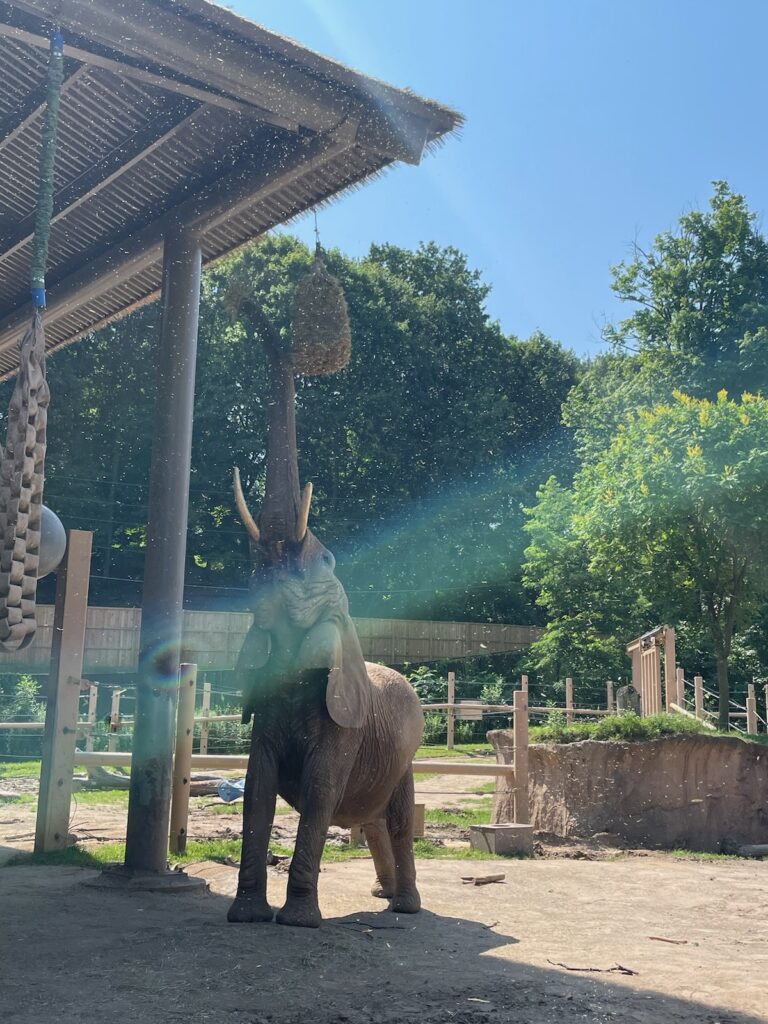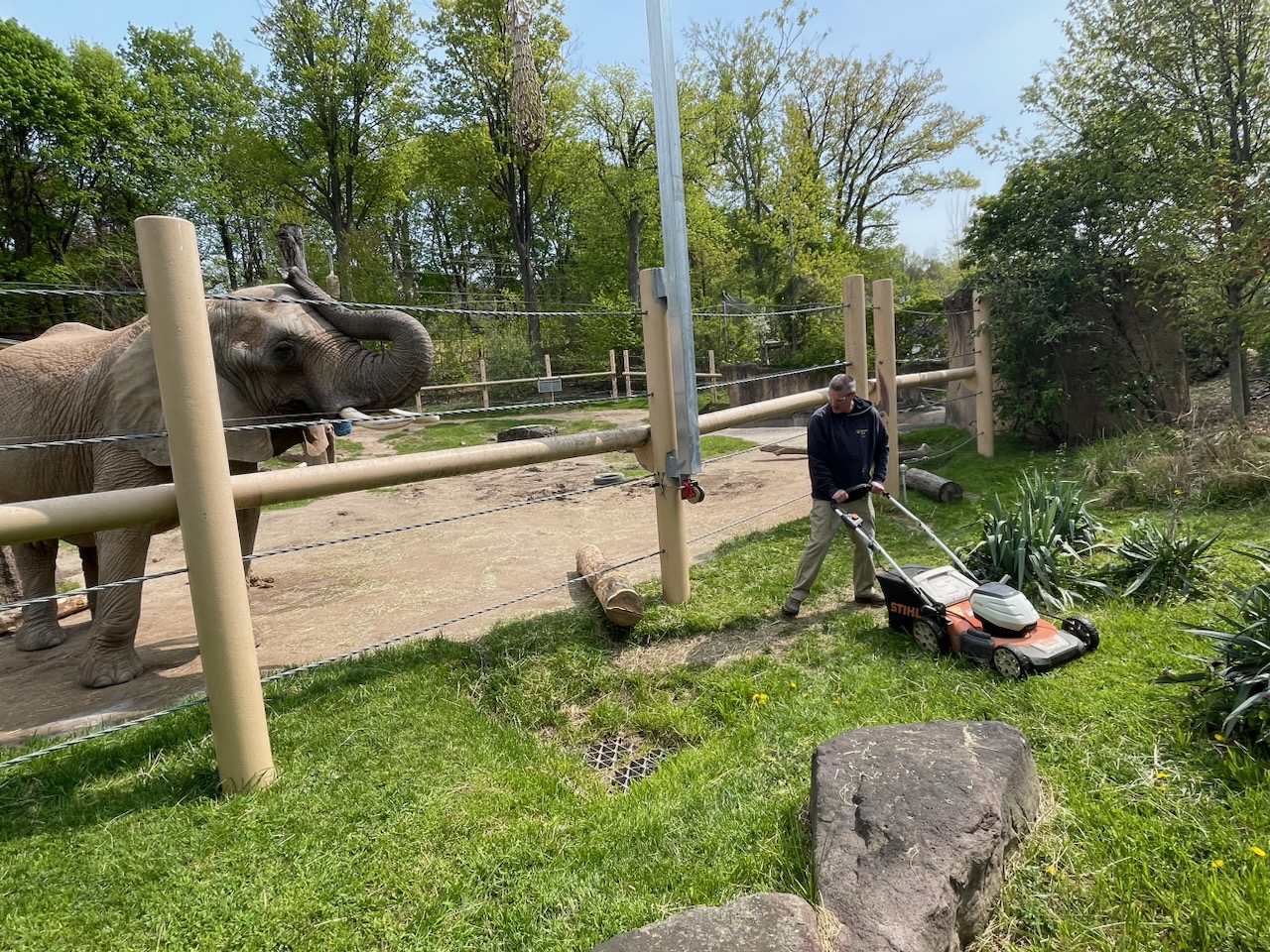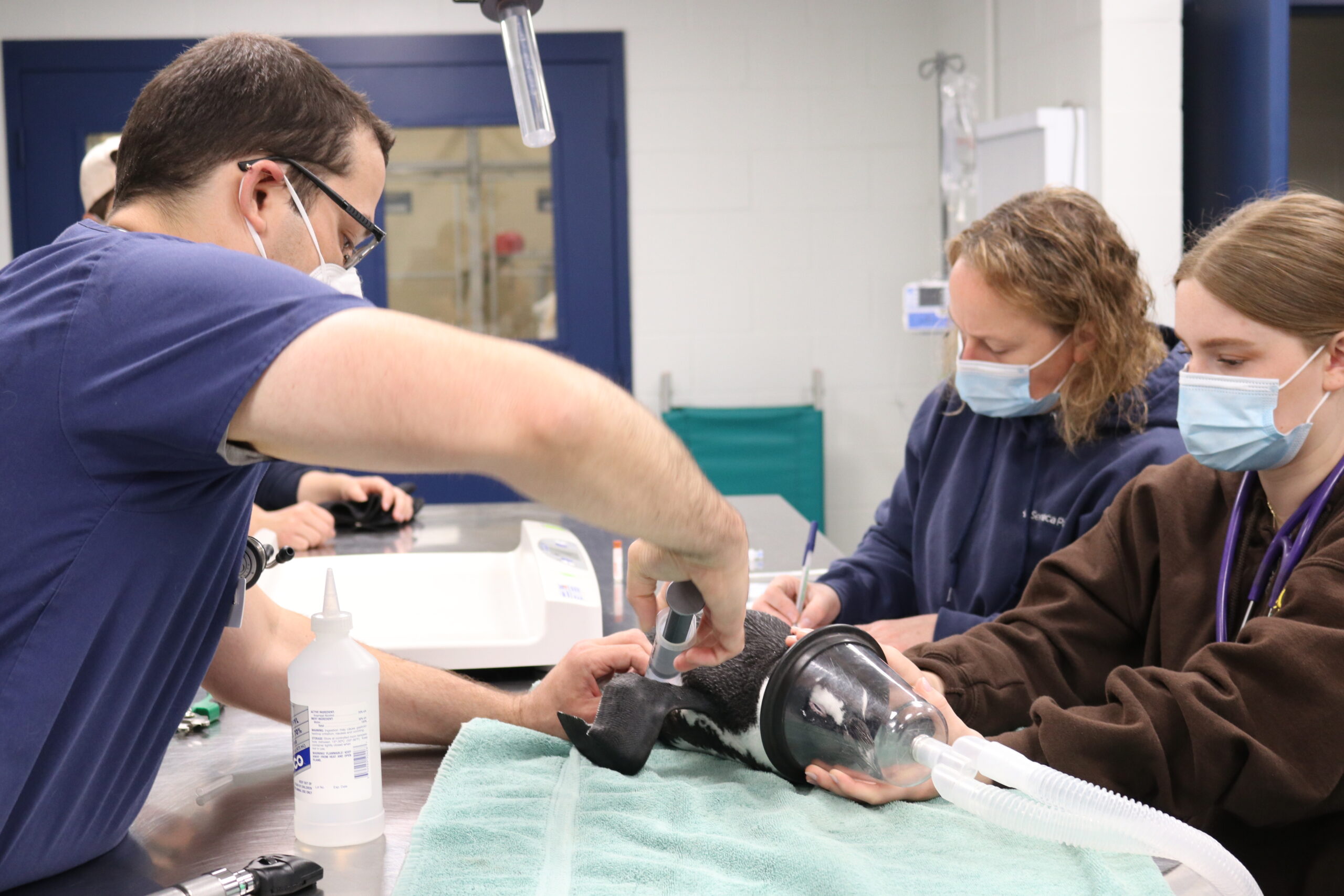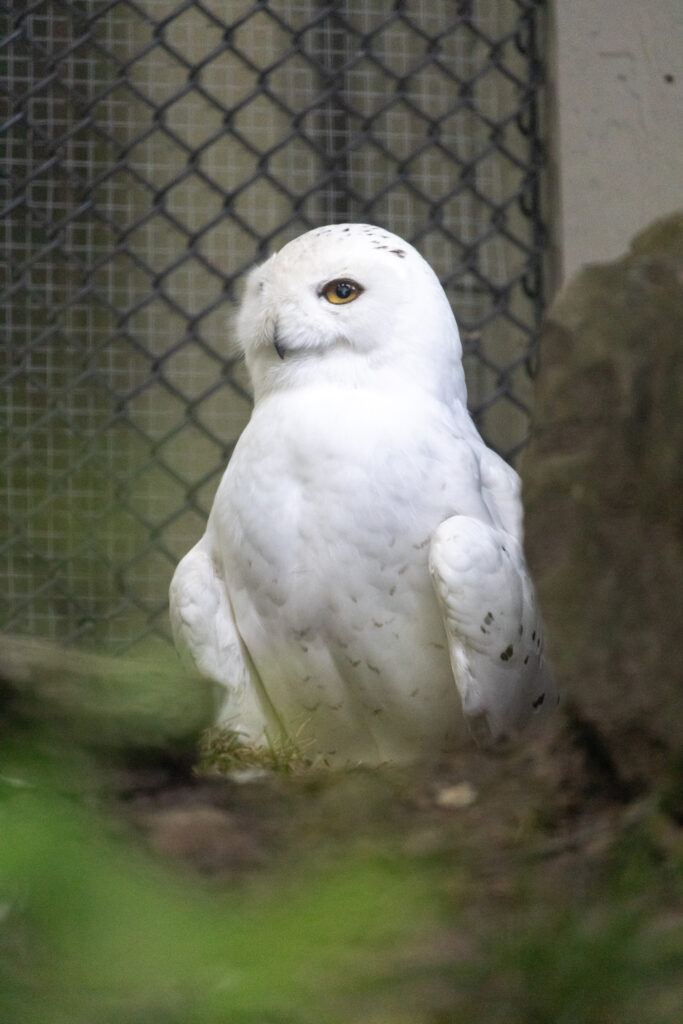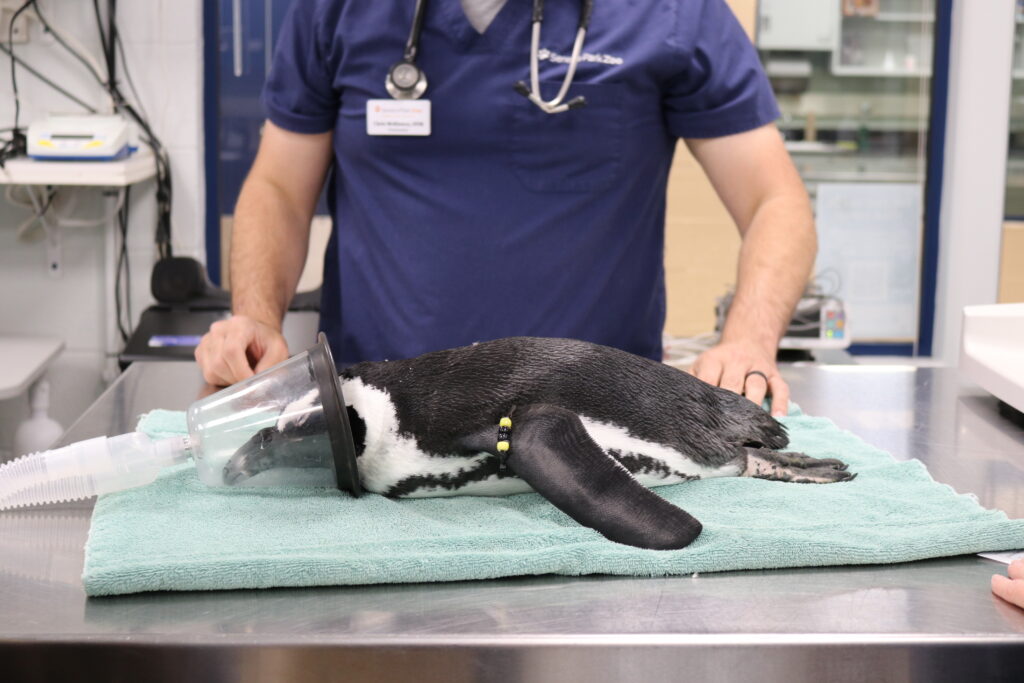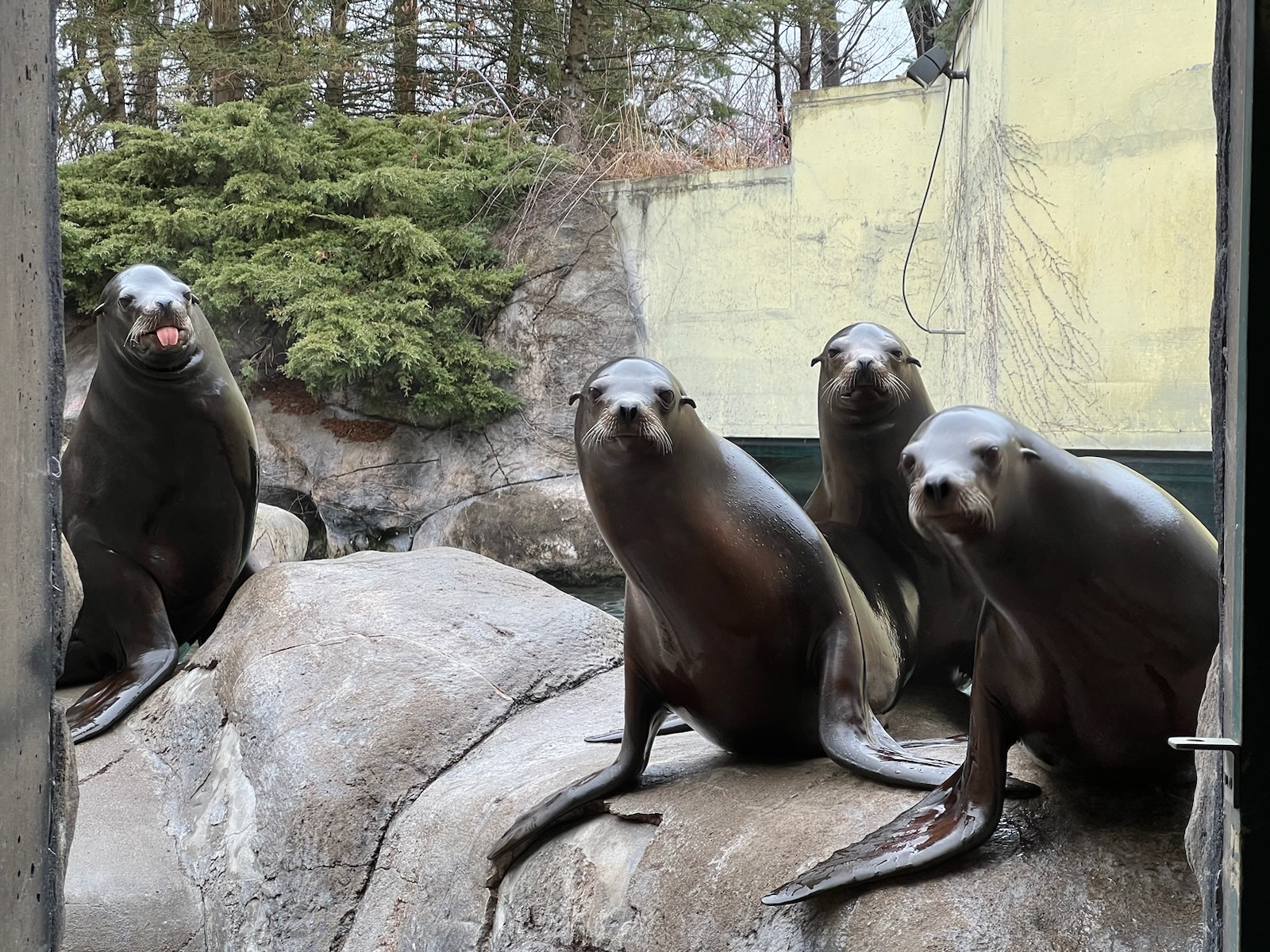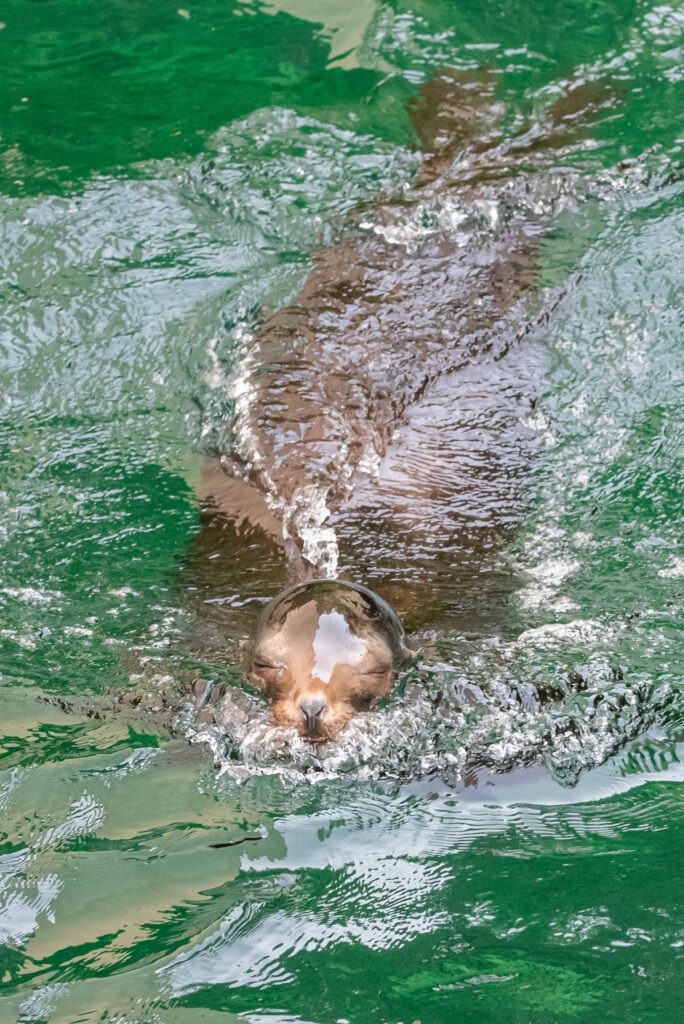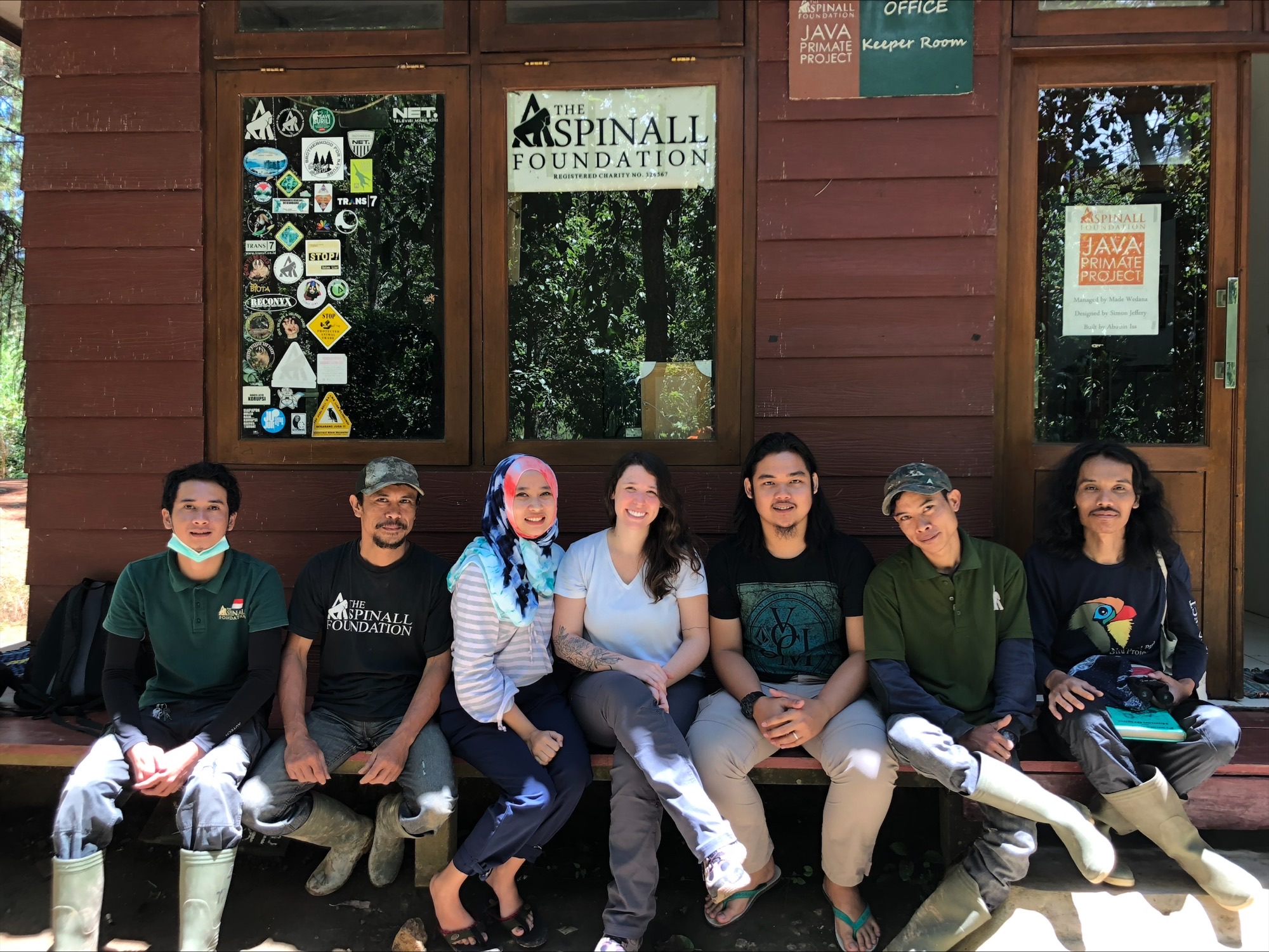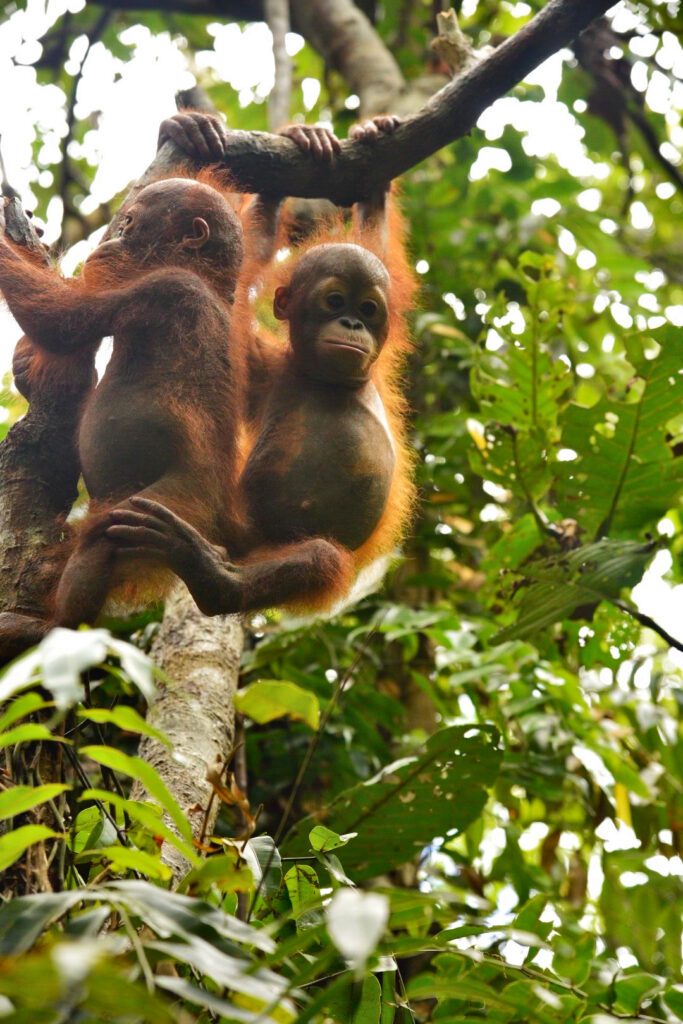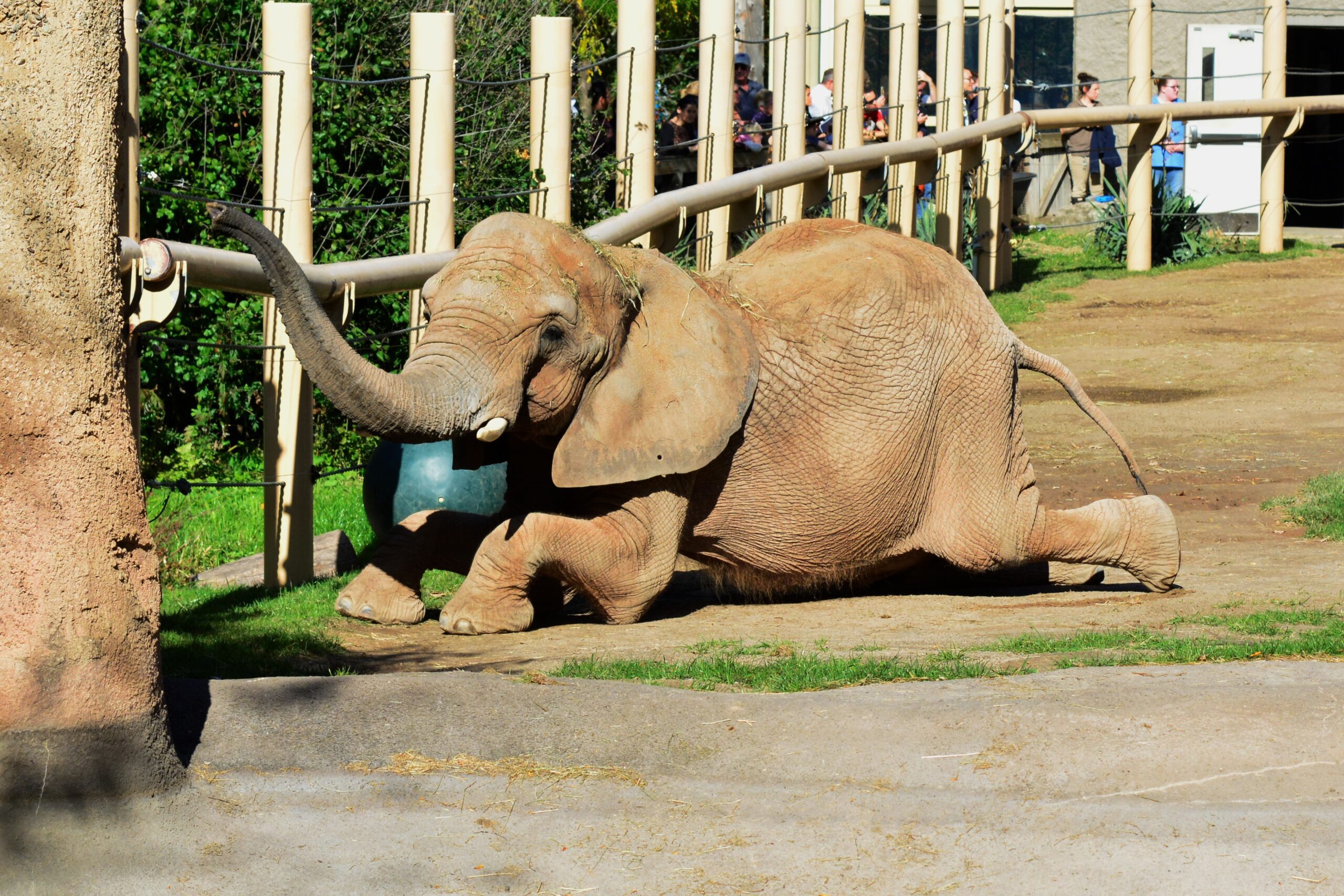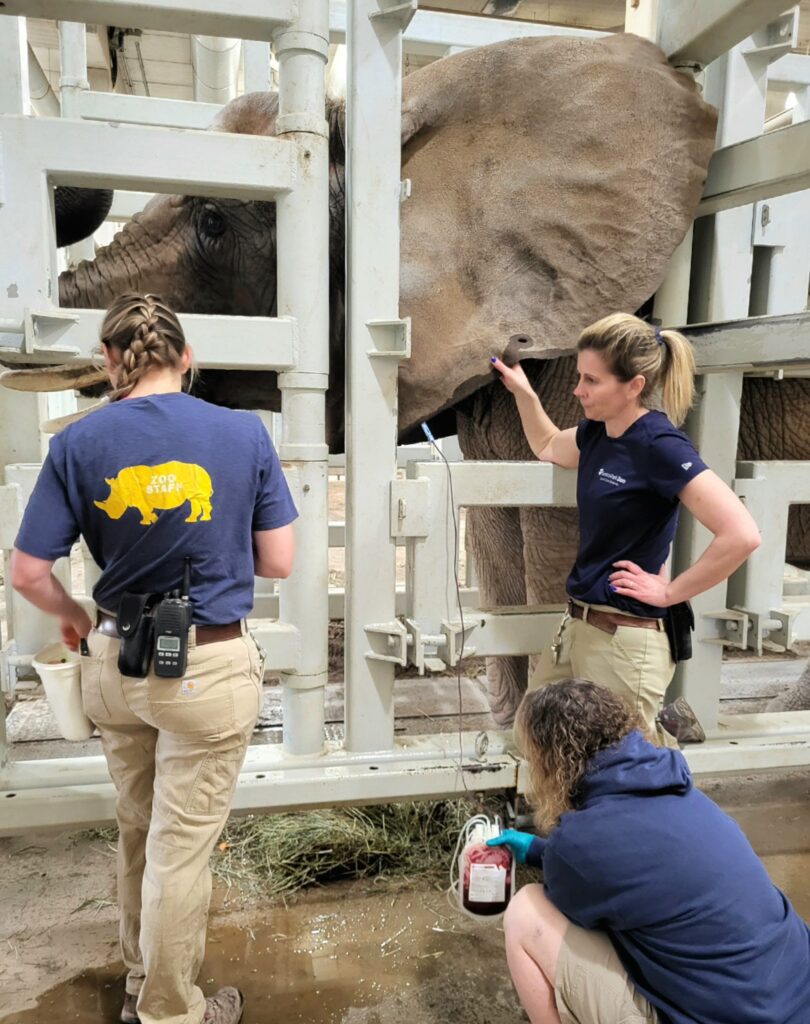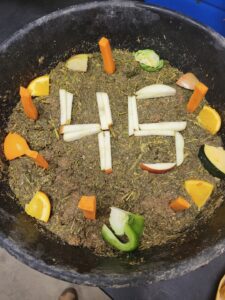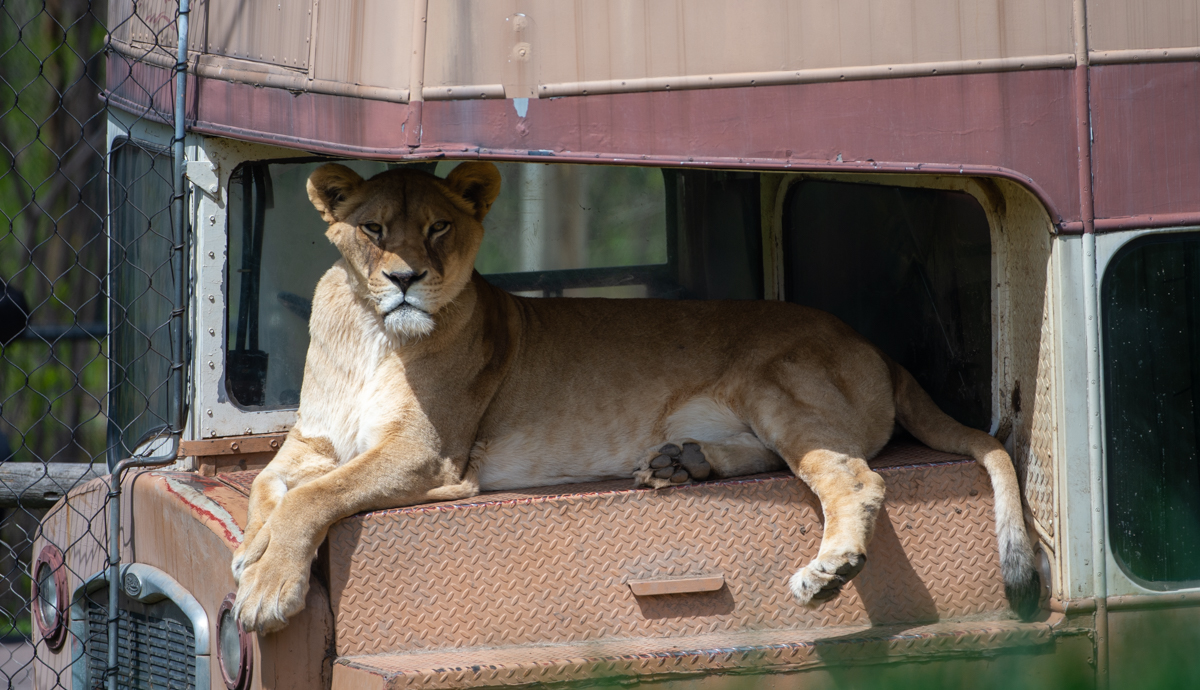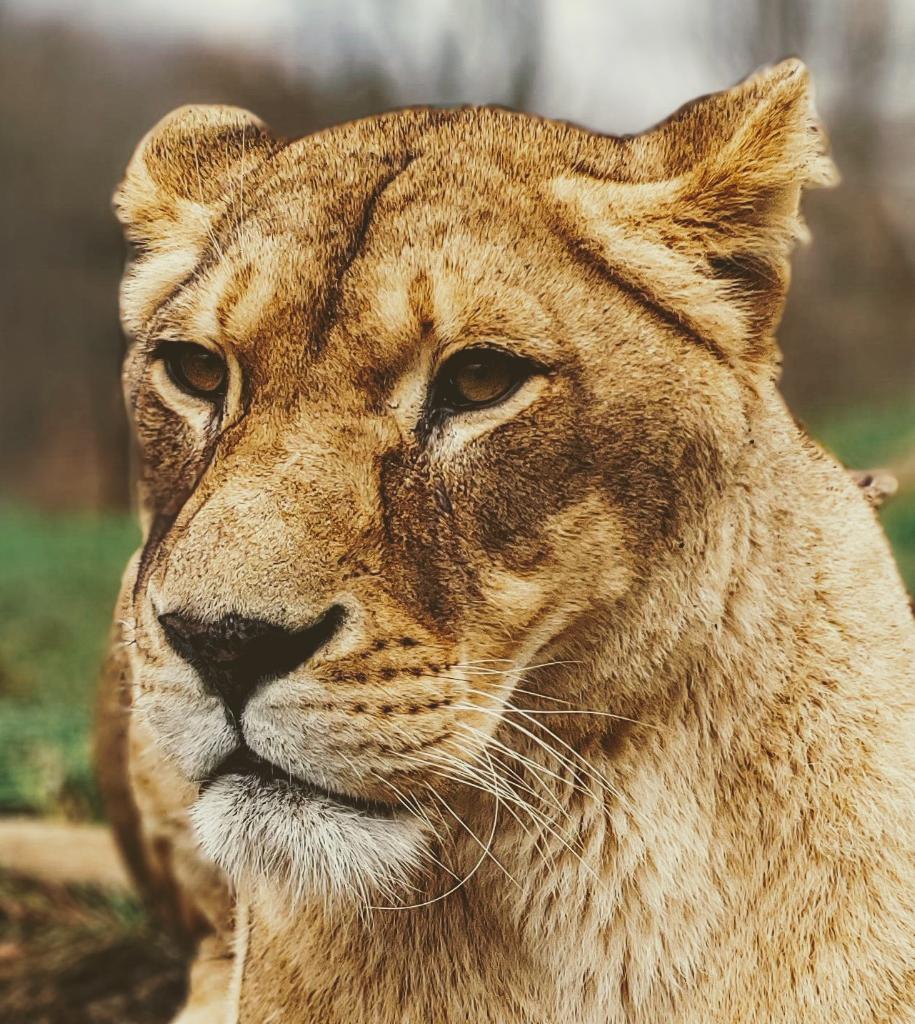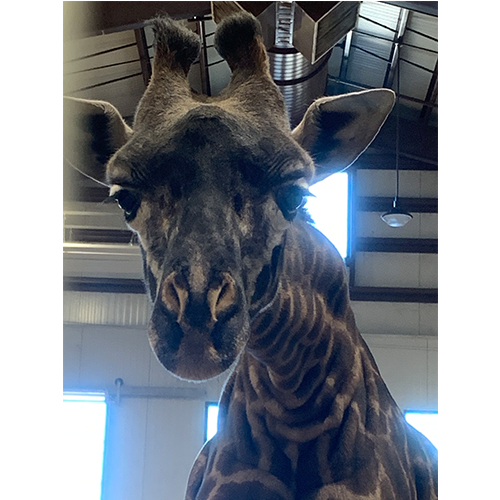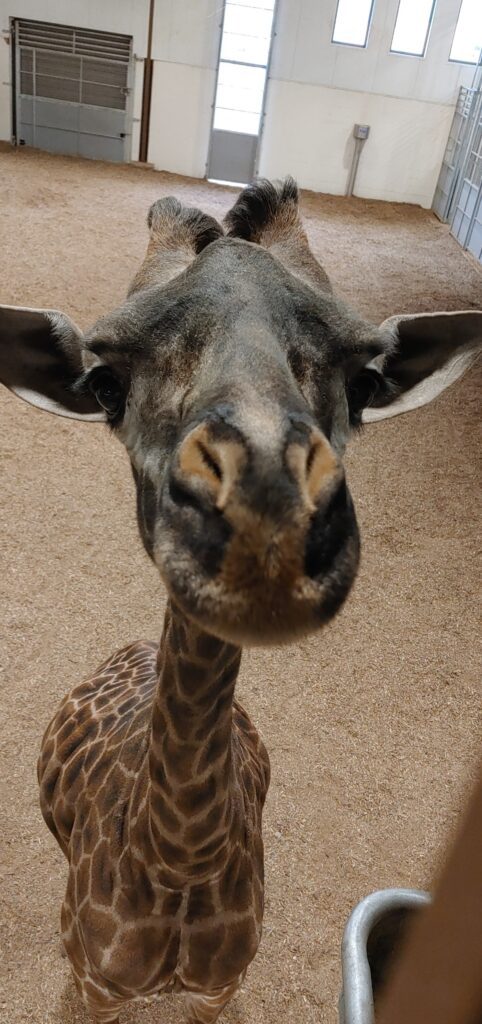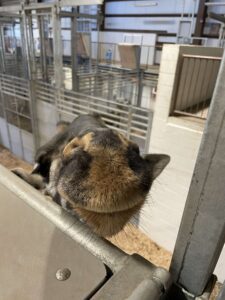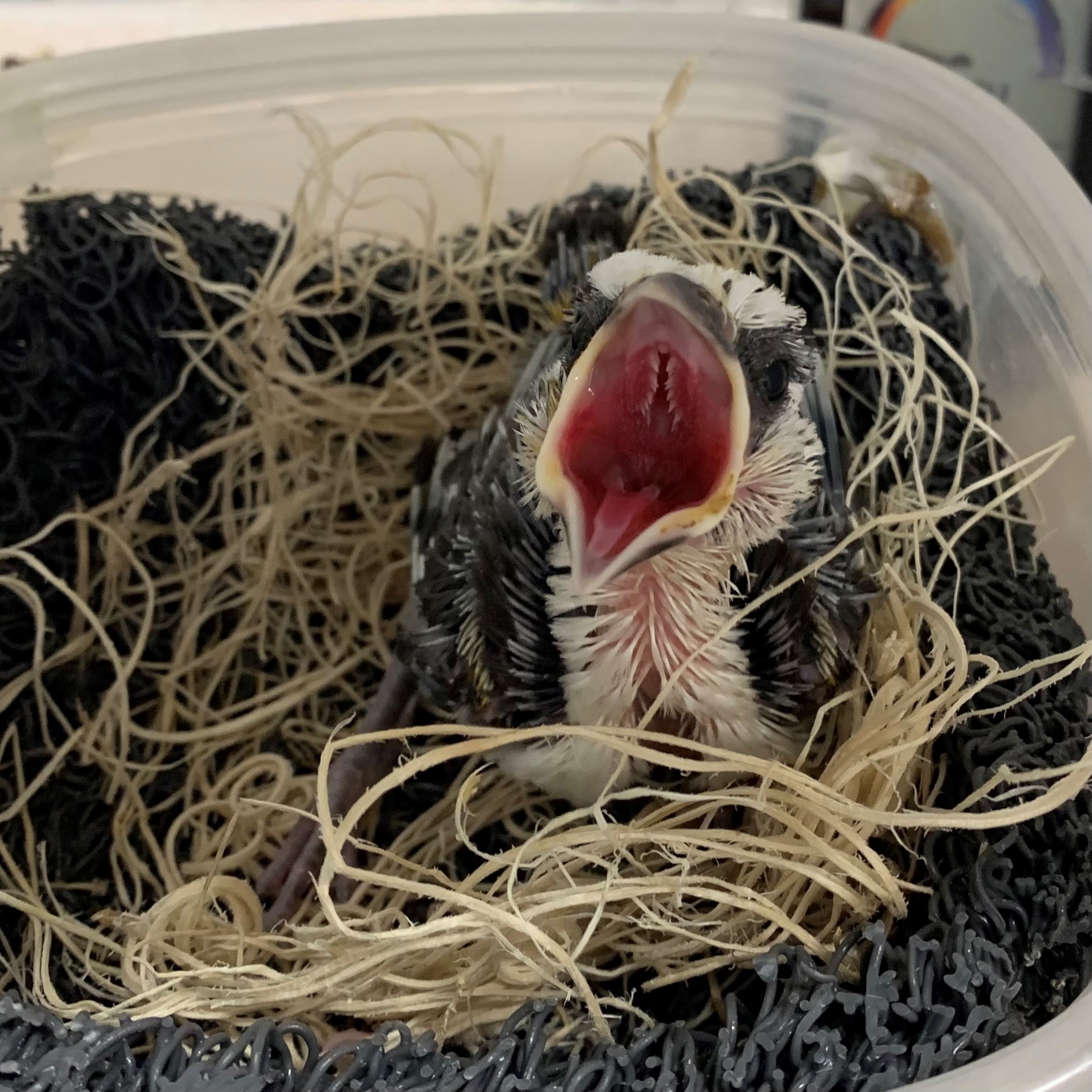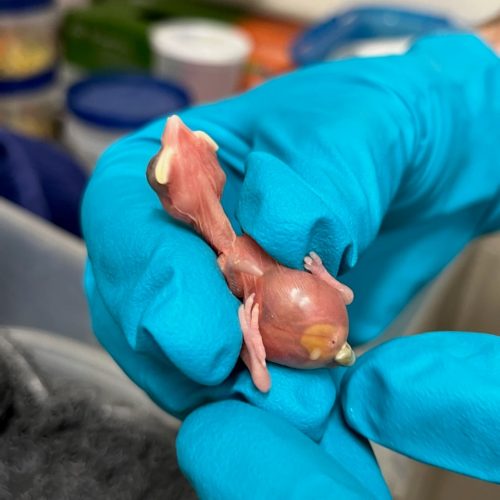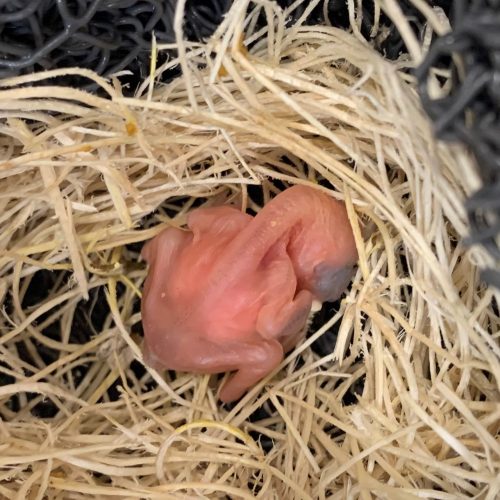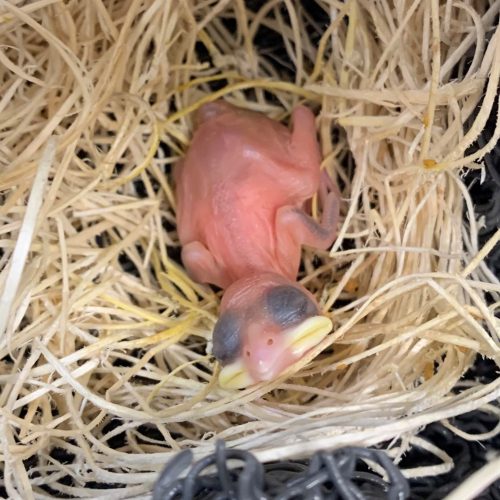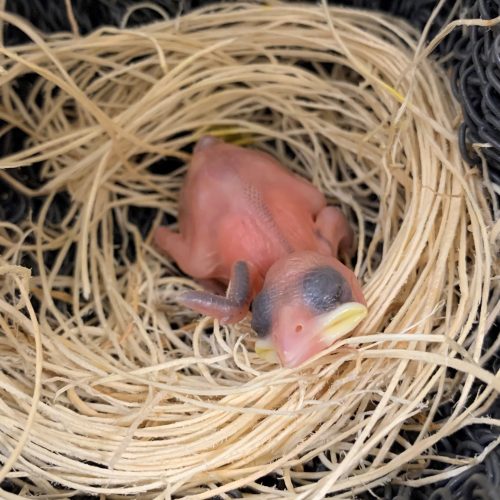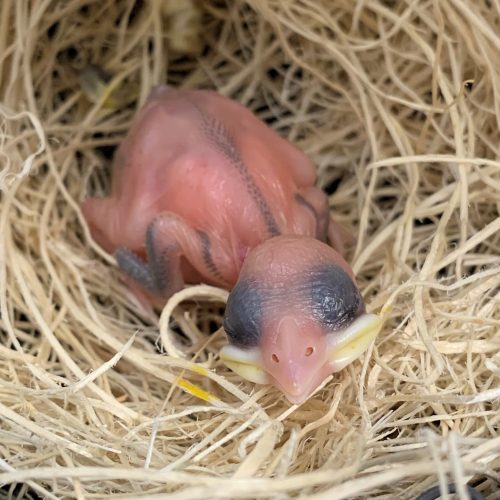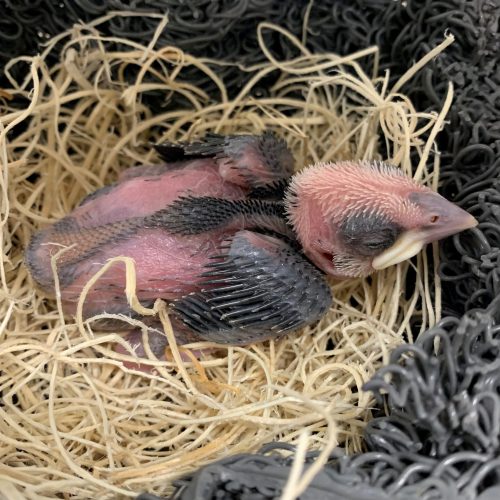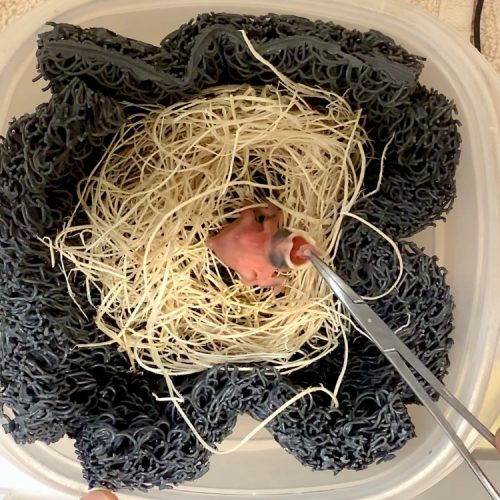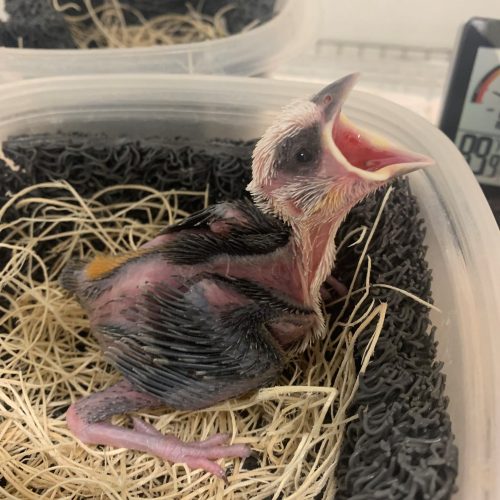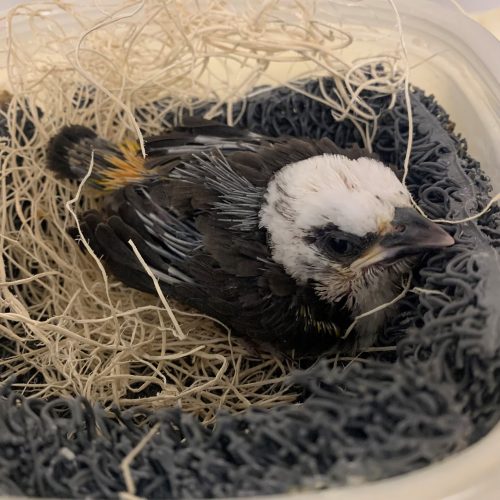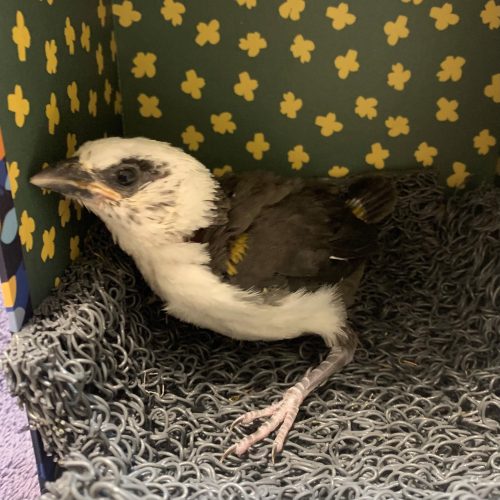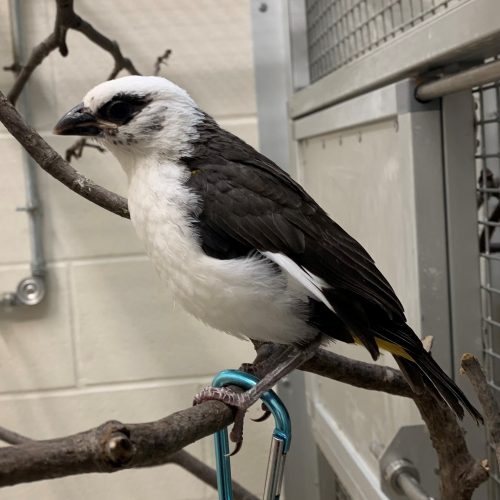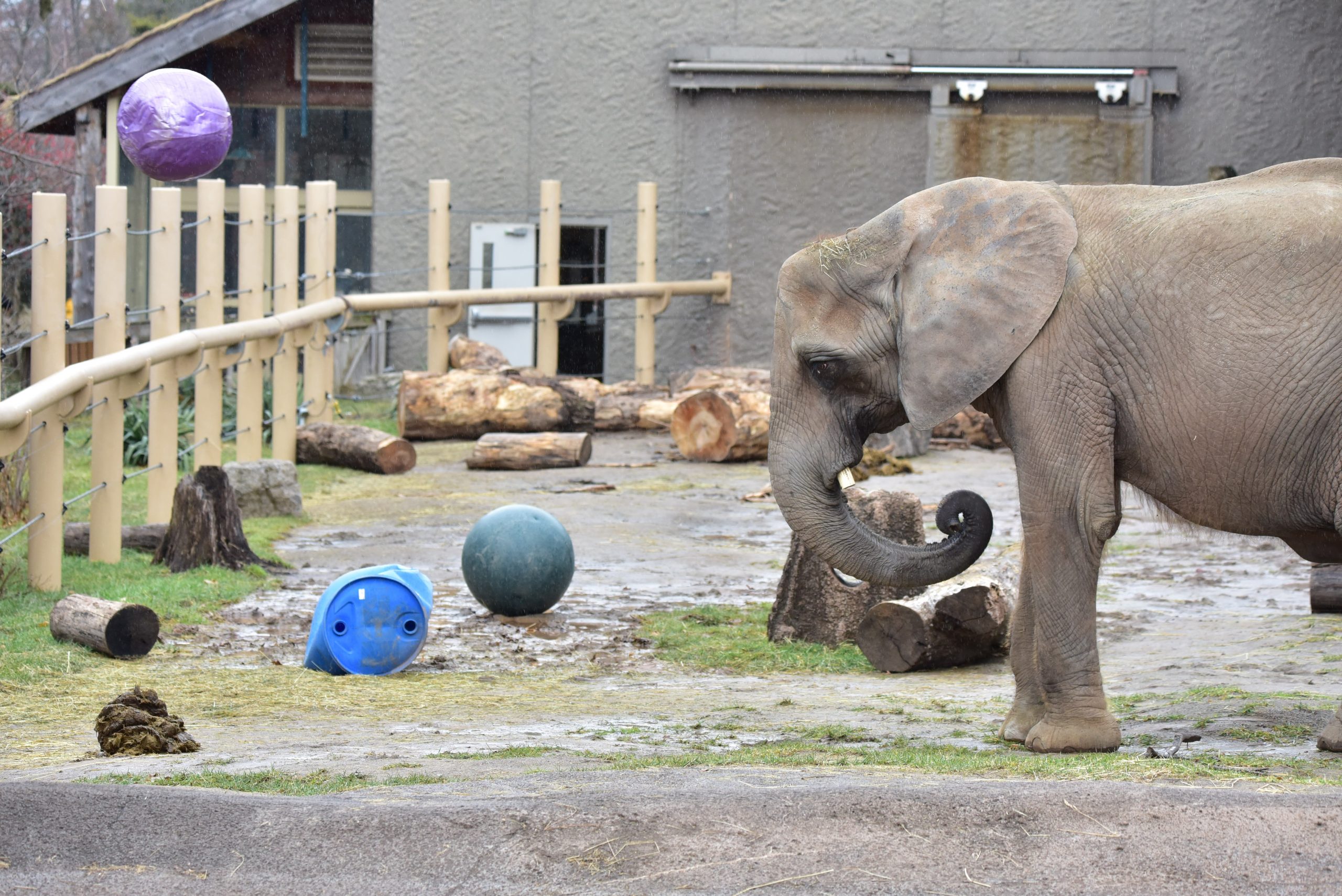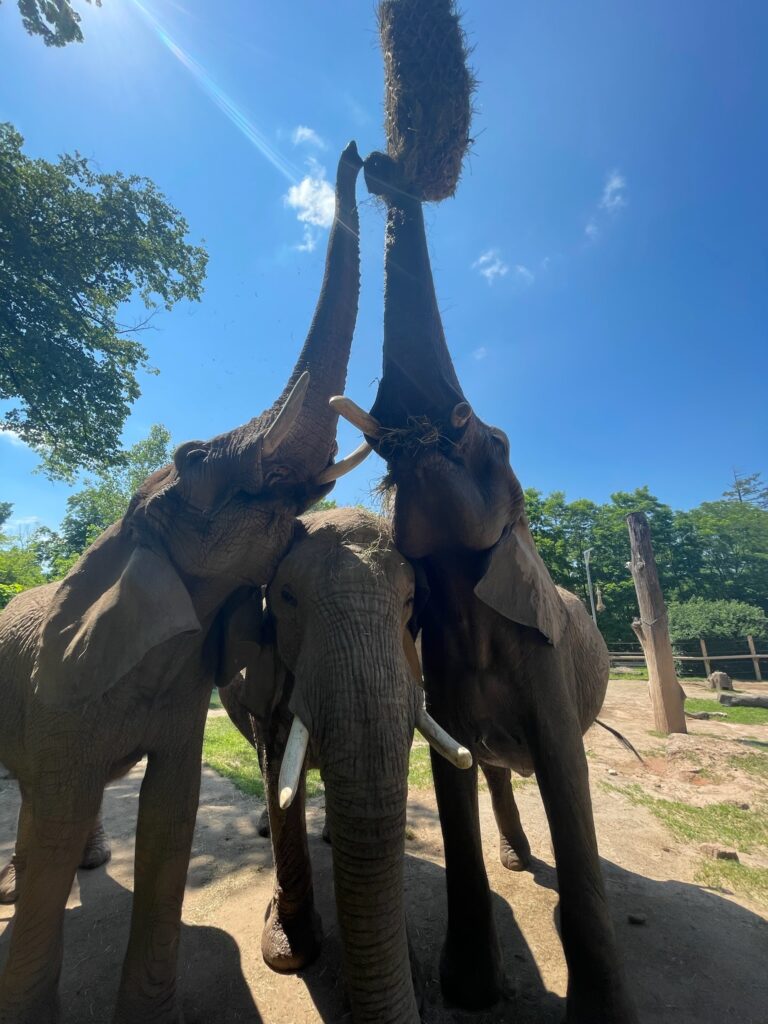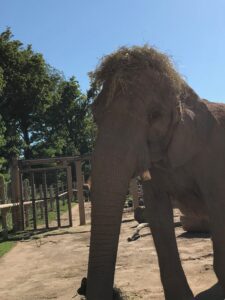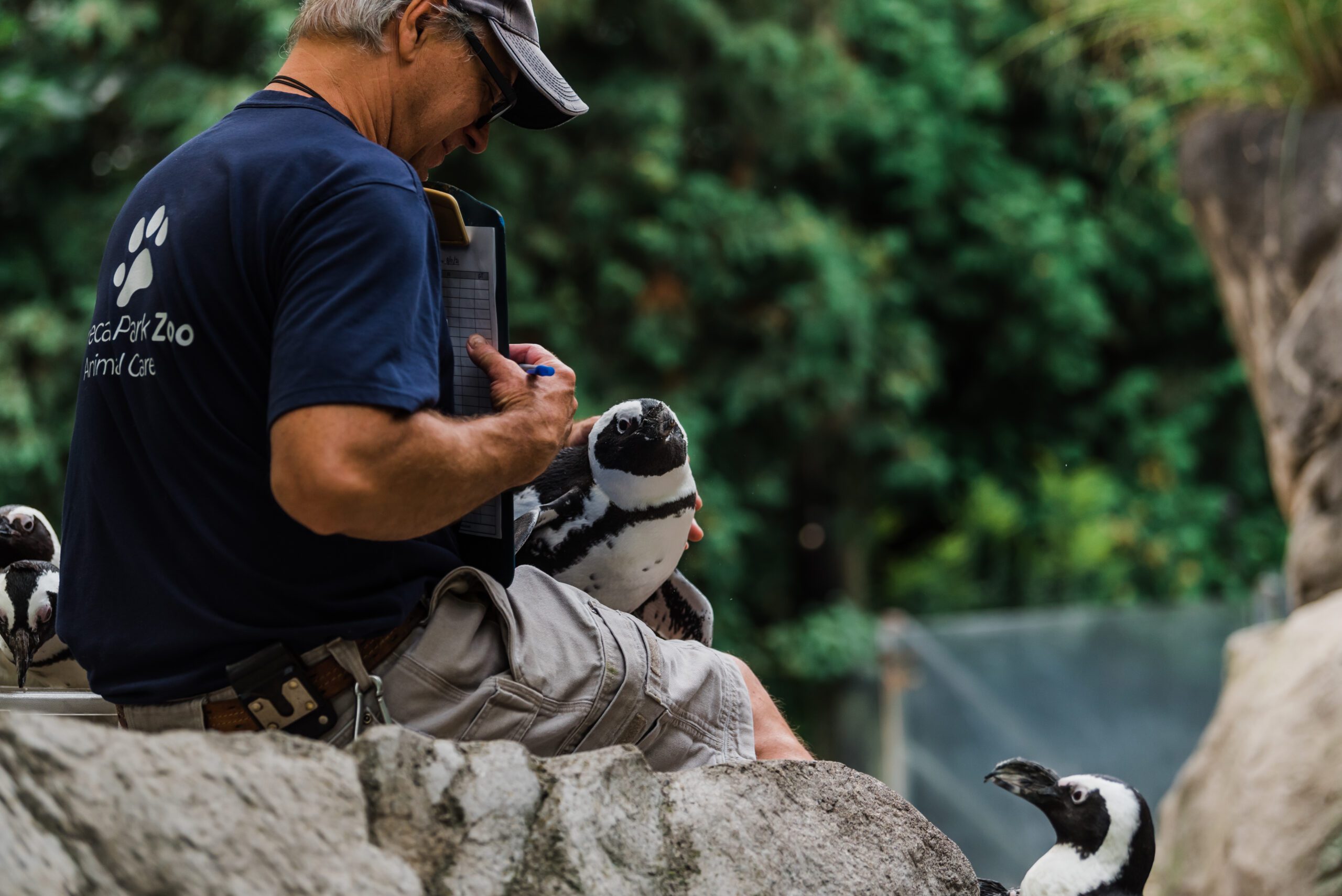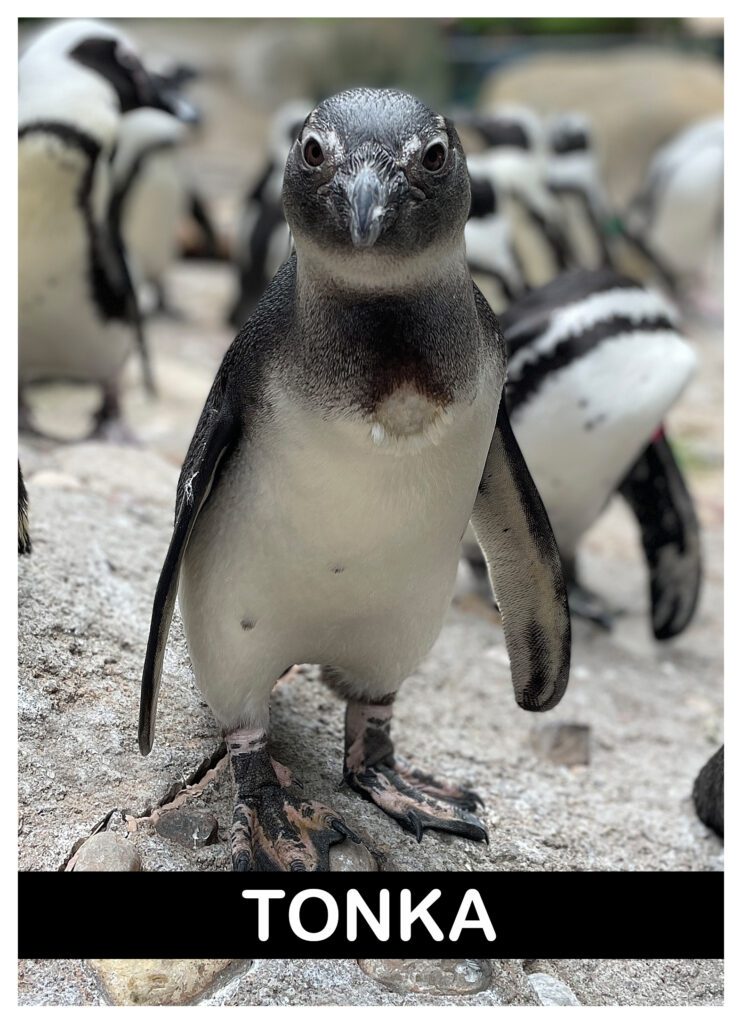July 15, 2023
This summer is a little sweeter knowing that Moki is turning 41 years old! She is past the average life expectancy of female African elephants, which is 38.5. Moki is always eager to participate in training sessions, unless she’s sleeping in the sun.
An elephant’s truck is an amazing adaptation that allows them to do remarkable things. An elephant’s trunk has more muscles in it than an entire human body does. It can function as a hand, nose, an extra foot, a signaling device, tool, siphoning water, digging, dusting, you name it! Moki is a great ambassador animal that is always highlighting this iconic characteristic.
When Moki swims in the pool, you can see her using her trunk as a snorkel. You also may see her picking up large tree trunks or gently picking blades of grass to eat. An elephant’s trunk can also hold up to 2.5 gallons of water. African elephants have two “fingers” at the end of their trunk while Asian elephants only have one. Even though baby elephants can stand quickly after birth, they have to learn how to use their trunk.
During your next visit, be sure to wish Moki a very happy birthday. She will be the one reaching the furthest for the food!
– Zoologist Kat Kleinschmidt
